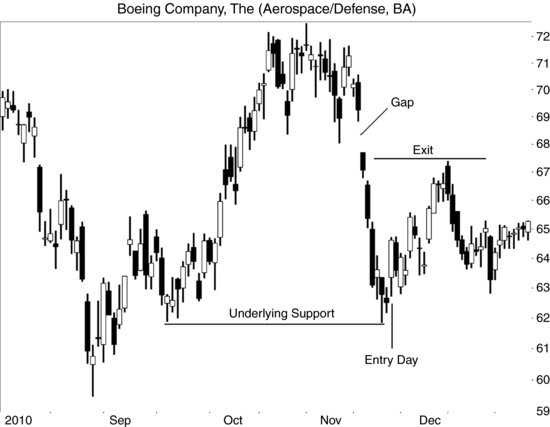CHAPTER 2
Swinging Techniques
The key to swing trading is learning to identify when price is going to turn. If you can do that, then it is easier to profit from a move.
Figure 2.1 shows an example of how that key turning point works in action. In early November 2010, Boeing (BA) gapped down and made a straight-line run lower until it found support at 62. The speed of the decline and the support layer that it would slam into made me feel confident that the stock was due to bounce. But how high would it bounce?
FIGURE 2.1 A potential swing trade would have missed its exit price by just 4 cents.

My guess was that the bounce would carry the stock back to the bottom of the gap, stopping at 67.69 (the high the day before the gap). I considered taking a huge position in the stock to boost the profit potential, but decided not to. I paper traded it instead. Why I chose to step aside is hard to explain, but I just did not feel confident that the trade would work as I expected.
Entry would have been at about 63.35 (the open on the day shown), and I would have planned to exit a bit shy of the target, say 67.43 (below the round number 67.50), probably using a limit order.
Since the stock dropped like a stone through water on the way down, I expected (hoped, really) a quick bounce. Instead, the stock seesawed up and down, taking its time as it trended higher. Three weeks later, the stock ...
Get Swing and Day Trading: Evolution of a Trader now with the O’Reilly learning platform.
O’Reilly members experience books, live events, courses curated by job role, and more from O’Reilly and nearly 200 top publishers.

